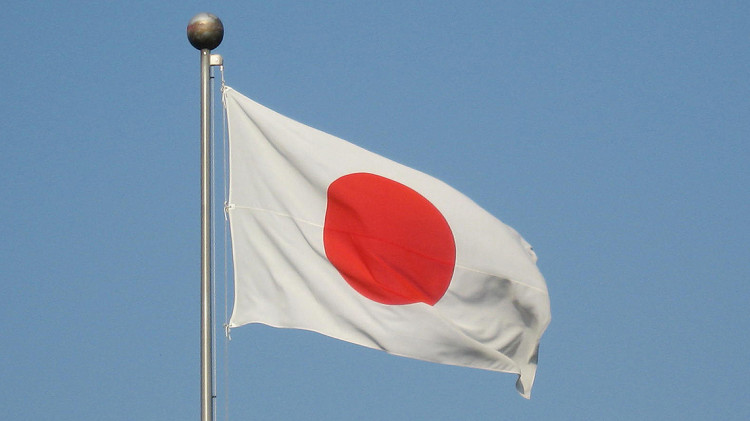As part of ongoing assistance and support extended to Japan by the International Atomic Energy Agency (IAEA), a Task Force set up by the Agency to review the safety of the discharge of treated water from the Fukushima Daiichi Nuclear Power Station will travel to Japan next week to start reviewing the regulatory aspects of the planned discharge into the sea. The Task Force will meet with Japan’s Nuclear Regulation Authority (NRA), an independent body responsible for assessing the plan’s adherence to the country’s regulatory requirements.
In response to the Government of Japan’s request for such assistance, Director General Rafael Mariano Grossi announced last year that the IAEA would conduct a review of the safety aspects of the Government’s Basic Policy on how to manage the water stored at the site following the 2011 accident. The implementation of the gradual water discharge by Tokyo Electric Power Company Holding’s (TEPCO), the operator of the power station, will be subject to regulatory approval from the NRA. The IAEA Task Force will assess if the NRA’s review and approval process is conducted in line with international safety standards.
The Task Force was established by Director General Grossi in 2021, shortly after Japan announced its Basic Policy in April last year. It comprises staff members from IAEA departments and laboratories, as well as eleven independent, internationally recognized experts with diverse technical competencies from Argentina, Australia, Canada, China, France, the Marshall Islands, the Republic of Korea, the Russian Federation, the United Kingdom, the United States, and Viet Nam. Members of the Task Force will be in Tokyo from 19 to 26 March to meet with NRA representatives. It follows an earlier Task Force mission in February to assess the operational safety aspects of the water discharge, which is expected to last for decades.
Director General Grossi has said the IAEA will assist Japan before, during and after the discharge, which is planned to begin approximately two years after the 2021 Basic Policy announcement. The support includes three major elements: a review of technical matters related to the roles and responsibilities of TEPCO and the Ministry of Economy, Trade and Industry (METI), a review of regulatory aspects, and independent water sampling and analysis activities to corroborate Japanese data.
Director General Grossi underlined the “leading role the IAEA has in ensuring nuclear safety” around the world. He said the Task Force includes members from outside the Agency, including some of the world’s foremost experts on nuclear safety and radiation protection, serve in their individual professional roles under the authority of the Agency, bringing “a combined wealth of international experience in the area.”
“The Task Force members are experts in the implementation of the IAEA safety standards. Their assessment of the NRA’s approval process will ensure that it is conducted in line with the Agency’s safety standards. As an independent, technical, impartial and multinational team, their review will provide assurances to the people of Japan and elsewhere in the world that TEPCO will discharge the treated water in a way that is safe for people and the environment,” he said.
The findings and observations from each mission to Japan will be published and then compiled into a full report on the overall safety of the water discharge prior to its planned start.
Since the accident in March 2011, water is needed to continually cool the melted fuel and fuel debris at the Fukushima Daiichi NPS. This water is treated through a process known as Advanced Liquid Processing System (ALPS) to remove radionuclides and then stored at the site in tanks. With space for the tanks running out, the management of the water has become a crucial aspect for the continued progress in the decommissioning of plant.
Under the agreed terms, the IAEA will examine key safety elements of Japan’s discharge plan, including:
- The radiological characterization of the water to be discharged;
- Safety related aspects of the water discharge process;
- The environmental monitoring associated with the discharge;
- The assessment of the radiological environmental impact related to ensuring the protection of people and environment; and,
- The regulatory control including authorization, inspection and review and assessment.
During next week’s mission, two IAEA staff members from the Task Force will observe additional sampling of ALPS treated water held on site. Water samples were also collected during the previous visit of the Task Force in February. The Agency’s independent analysis activities are required to corroborate the Japanese measurement results.
“By meeting with the NRA and reviewing their documentation and observing how the process they follow for their review is in line with relevant Agency safety standards, the Task Force will gain a full understanding of the regulatory aspects of the water discharge, including the plans for authorization and inspection and the ongoing regulatory assessment of the discharge plan,” Deputy Director General Lydie Evrard, Head of the IAEA Department of Nuclear Safety and Security, said.
On the last day of the visit, Deputy Director General Evrard and Gustavo Caruso, a Director within the IAEA Department of Nuclear Safety and Security, and Chair of the Task Force, will address the media at a virtual press conference.
The press conference is scheduled to be livestreamed at 16:00 (local time) on Friday, 25 March.
The IAEA and Japan have been cooperating extensively over the past decade to deal with the aftermath of the Fukushima Daiichi accident, in areas such as radiation monitoring, remediation, waste management and decommissioning. The IAEA’s safety reviews are based on its safety standards, which constitute the worldwide reference for protecting the public and the environment from harmful effects of ionizing radiation.


